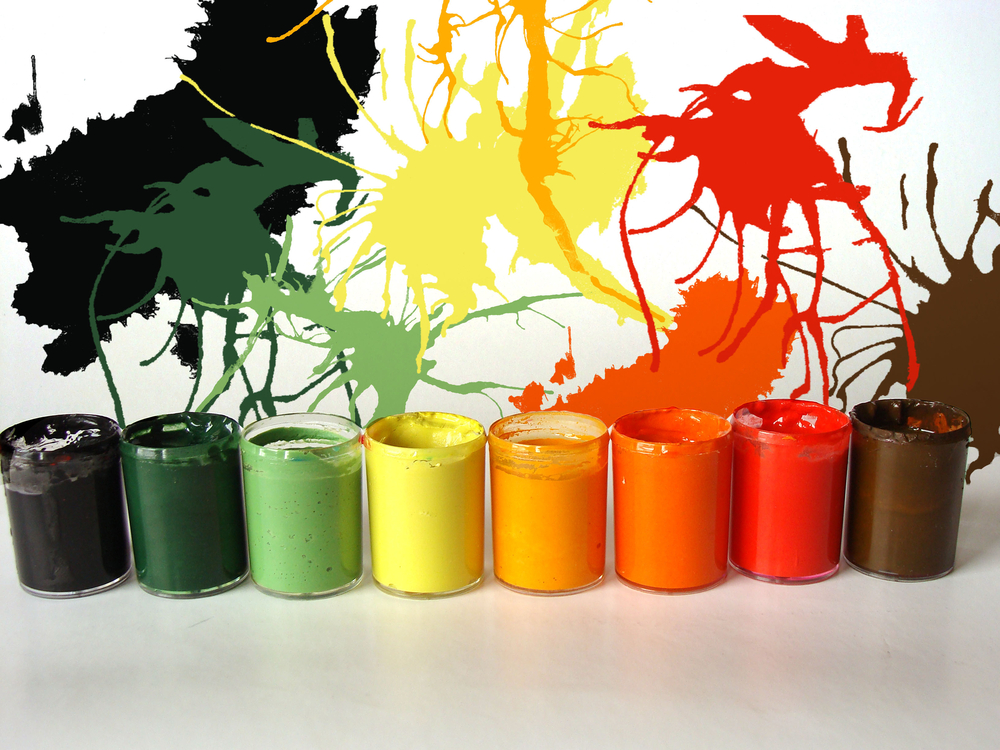Here are some popular ideas for painting a room. The syles may differ but a newly painted home may sell faster and for more money.
In homes across the nation, house painters are becoming artists.
As homeowners look for low-cost ways to dramatize their homes, they are rediscovering the aesthetic qualities of such painting effects as sponging, stippling, rag rolling, stenciling and texture paints.
Painting effects – also known as faux finishing – are becoming popular again as do-it-yourselfers look beyond the idea of bare walls.
They are fairly inexpensive and simple ways to get a very rich looking effect – without having to call in professional decorators or contractors.
Skill-wise, most of these effects are fairly easy to achieve. With certain painting effects techniques, if you make a mistake or don’t like the outcome, you can simply paint over it and start again.
A quick tip: Practice the technique you’re going to use on a inconspicuous spot, such as a closet wall or even a piece of cardboard. This is especially important with stenciling, which requires a little skill and a lot of patience.
What follows is a basis primer on the different painting finishes:
TIP #1: Sponging
Sponging is the most popular faux finishing technique because it’s the easiest to do. Also, it’s a great idea for paiting a room.
It starts with the application of a basecoat color with a roller or pad. After allowing the basecoat to dry, use a damp sponge to apply a second color, lightly dabbing on the basecoat paint to create a pattern that you prefer.
After the second color dries, you can apply additional color coats, and use different sponge textures. If you don’t like the outcome, recoat the wall with the basecoat and start over.
Have plenty of sponges. Natural sponges, available at paint stores, are the best applicators. Cut the sponge to paint corners and angles.
In general, sponging usually calls for a dark color basecoat and a light color topcoat. The sponging topcoat can also be a thinner, more opaque paint. It can be bought pre-mixed or regular latex paint can be thinned with water (usually a 1:1 mix is a good start).
Tip #2: Stippling and Graining
Stippling and graining paiting technique is similar to sponging but involves removing topcoat as opposed to adding it. And it usually involves a light color basecoat and a dark but thinner topcoat (available pre-mixed or latex paint diluted with water).
Again, apply a basecoat and allow that to fully dry. Then, cover a small section of the wall completely with the topcoat. Use a stippling paint brush to remove some of the topcoat while it is still wet and expose the basecoat. Move on to the next section.
There are numerous stippling brushes available, with patterns ranging from a freckled to a steak and mottled effect.
Stippling will give the wall a slight textured or glazed look.
Tip #3: Rag Rolling
The rag rolling painting technique can be done in one of two ways.
Similar to stippling, rag rolling usually involves a light color basecoat and a darker but thinner topcoat.
With the positive method, you put down a basecoat and allow it to dry. Then, take a clean cotton rag, crumple it and saturate it with the topcoat. Then roll the rag over the basecoat to create a pattern that you prefer.
You can also fold or crumple the rag and dab the wall to create different patterns, similar to sponging.
With the negative method, apply the basecoat and allow it to dry. Then apply the topcoat with a roller to small sections of the wall, and while still wet, use a rolled rag to wipe off the topcoat, again creating a preferred pattern.
Additional effects can be created by using a chamois, crumpled plastic wrap, or a plastic bag filled with rags.
Tip #4: Spattering
A speckled effect can be produced simply by lightly splashing a basecoat with one or usually more topcoats. After applying a basecoat and allowing it to dry, dip the tips of a stiff-bristle brush into a topcoat.
Hold the brush a few inches from the wall. Run a wooden paint stirrer or ruler across the top of the brush back away from the wall, splattering the paint lightly on the wall.
After the first topcoat color dries, repeat the process with additional colors.
You can paint over mistakes or runny spatters with some of the basecoat.
Remember that a home improvement that will help you sell your home faster and in any market is a paint job.
Tip #5: Stenciling
The stenciling technique has become extremely popular as more people choose country motifs for their homes.
Stenciling basically involves laying down a light color basecoat and after it dries, applying single-colored and, more commonly, multi-colored stencil patterns over it.
Plastic pre-cut stencils are available in every pattern imaginable at arts and crafts stores. You can also buy stencil paper to create your own patterns.
Stencil paints and brushes are also available at arts and crafts stores and paint stores.
The key with stenciling is patience. Also, be careful not to smear the paint when you move the stencil. You may end up with a wonderful room that came from a simple idea on painting a room.
© by Jim Sulski.

